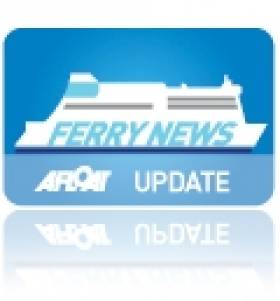Displaying items by tag: Ferry Refit
Ferry Refit Brings Added Passenger Capacity and Facilities
#FerryRefit- Stena Adventurer, one of two Stena Line ferries operating the Dublin Port-Holyhead route has completed an extensive refurbishment which includes increased passenger capacity.
The refit, which sees enhanced and additional passenger facilities, has enabled the Stena Adventurer to increase capacity from 1200 to 1500 passengers. The boost to capacity is welcome news for customers travelling during peak sailings, especially during this busy Christmas and into the New Year season.
Stena Shopping is bigger and better than before with more wall space giving passengers even more products and great value deals to choose from with up to 40% savings compared to the high street.
The Stena Plus lounge also has additional capacity with more seating for extra comfort, while deck 7 has been transformed to offer a brand new area for passengers to eat, drink and relax with a Metropolitan Bar & Grill restaurant, a new comfortable seating area, movie lounge and children's play area.
Extra features will also be added to deck seven and eight later this month with a Hologram Guide and an Interactive Wayfinder on each deck which will enable help customers to navigate their way around the ship and find out more about meal deals and special offers.
Ian Davies, Route Manager Irish Sea South said: "We are delighted that the extensive refit on the Stena Adventurer has been completed and we can now offer our customers an even greater travel experience than before. The additional capacity also allows us to help more customers get the sailings they want.
"The new and improved passenger areas offer customers more places to relax onboard and with a larger shop there are even more bargains to choose from. What's more, we now offer a greater choice of dining options for passengers to enjoy really good, great value meals.





























































